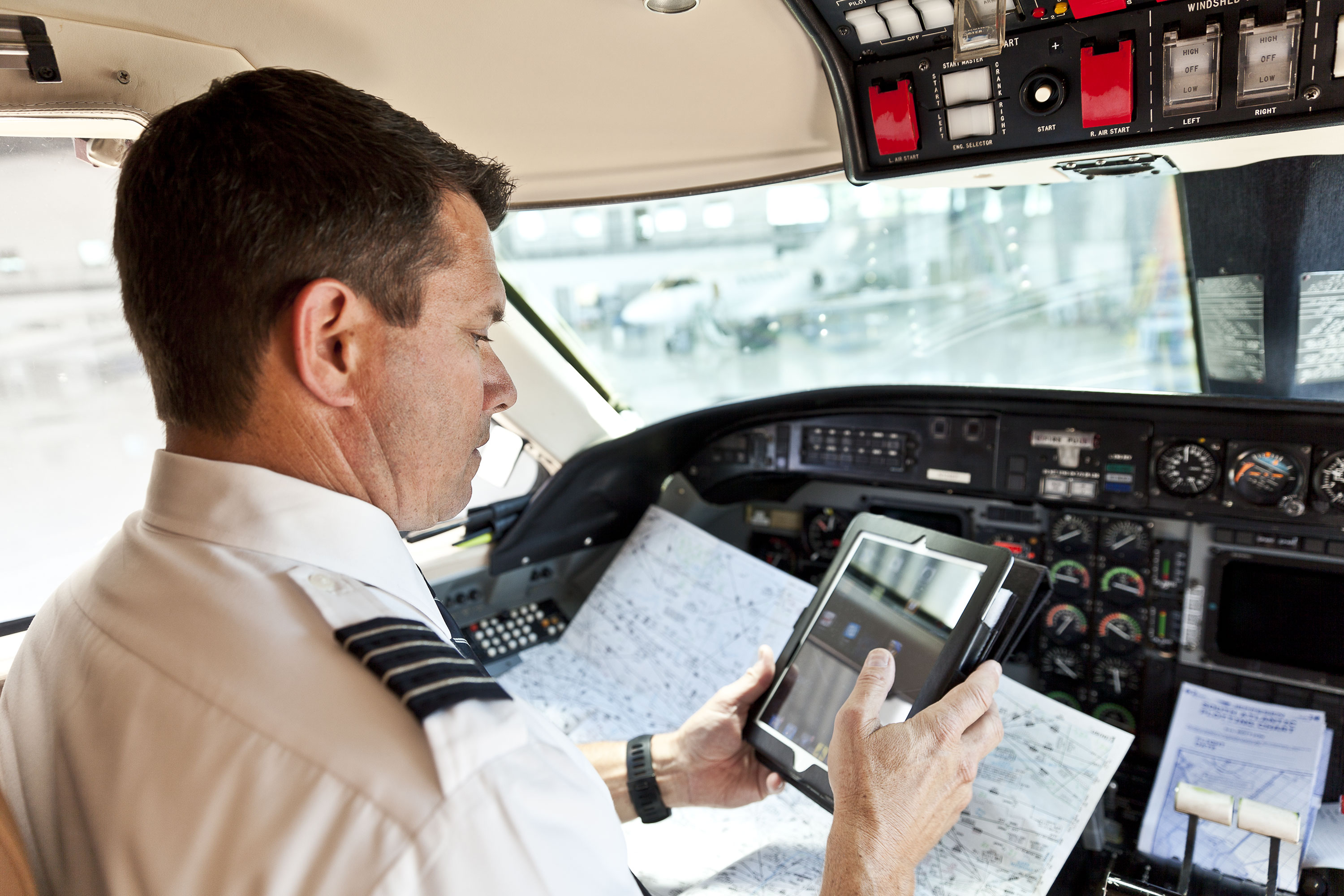
An Electronic Flight Bag (EFB) is a device that hosts applications that allow flight crews to perform a variety of functions that were traditionally accomplished by using paper products and tools. In its simplest form, an EFB can perform basic flight planning calculations and display a variety of digital documentation, including navigational charts, operations manuals, and aircraft checklists. The most advanced EFBs are fully certified as part of the aircraft avionics system and are integrated with aircraft systems such as the FMS. These advanced systems are also able to display an aircraft’s position on navigational charts, depict real-time weather, and perform many complex flight-planning tasks.
Using an Apple iPad or other Tablet Device in Part 91 Operations
With many pilots using iPads to display approach plates, airport diagrams and other digital documentation, the FAA released InFO 11011 to clarify when authorization is needed to use the device. For Part 91 operators, authorization is not required to utilize an iPad in this capacity. If an operator plans to install a mounting device or power source, requirements found in Advisory Circular 120-76D are still applicable.
The information in AC 120-76D is directed toward certificated air carriers and fractional providers, but Part 91 operators should as a best practice refer to the guidance on developing EFB training programs and making the transition to a paperless cockpit. The pilot in command is ultimately responsible for ensuring that the proper aeronautical charts are available for the flight, so it is important to document and validate the reliability of the iPad during the transition. During this initial transition period the crew should carry paper backup materials.
Part 91F operators are required to comply with AC 91-78 Use of Class 1 or Class 2 Electronic Flight Bag (EFB), but do not need written approval. They should also validate compliance with FAR 91.503 (flying equipment and operating information for large/turbine powered aircraft) and FAR 91.21 (portable electronic devices) when using an iPad. Part 91F operators must also have a secondary system in place to augment their primary iPad. The secondary system can simply be a backup iPad or alternate EFB.
EFB Approval Process for FAA Certificated Operators
Before using an EFB when operating under Part 91K, 125, or 135, authorization must be received from the principal inspector. The procedures for obtaining this approval are contained in FAA Order 8900.1 and AC 120-76D. OpSpec/MSpec/TSpec/LOA paragraph A025 authorizes the use of Electronic Signatures, Recordkeeping Systems, and Manuals and will be required for operators wishing to use an EFB for any of these functions.
During the approval process, the operator will need to develop training programs and operational procedures to utilize the EFB in compliance with FAA guidance.
Display of Own-Ship Position
Operators may overlay their own-ship position on an EFB only when the installed primary flight display, weather display, or map display also depict own-ship position. To use this function, operators must ensure flight crews know to reference the installed primary flight and navigational displays for maneuvering and be able to resolve differences between installed equipment and the EFB.
The operator must show that the device has been through rapid decompression testing and noninterference testing in accordance with the AC. Apple has conducted the noninterference test and Jeppesen has conducted the rapid decompression test. Both organizations have made their compliance statement available to the public.
iPad Resources
EFB Hardware and Software Classifications from AC 120-76D
The following classifications, described by the FAA, help operators determine what type of approval is necessary to use an EFB.


 International Business Aviation Council Ltd.
International Business Aviation Council Ltd.